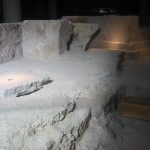A GROUP OF STUDENTS FROM THE LOCAL CONSERVATORY WILL SHARE MUSIC STAND AND MUSICAL EXPERIENCES WITH THEIR PORTUGUESE COUNTERPARTS

The Professional Conservatory of Music of Llíria has started this week a new mobility within the European Erasmus + program through the Department of Artistic Education of the City Council edetano.
As explained by the councilman of the Area, Paco Garcia, “a group of 8 students and 2 teachers of the Conservatory of the town are participating these days in this new training mission in the Portuguese municipality of Leiria, which is also part of the UNESCO Network as Creative City of Music”.
Throughout the two weeks that this mobility will last, the participants will be hosted by the Orfeão de Leiria, with whom they will share educational experiences with the students of the center and the teaching staff, and will also participate in recitals organized by this musical institution.
The students from Llíria will also carry out various cultural, educational, social and tourist activities, sharing lectern and stage with the students from Leiria.
The mayor of Artistic Education has stated that “we are very grateful to the teaching and management team of the Orfeão de Leiria, who from the first minute have been involved in the organization and coordination of this international educational experience of our young musicians. This project saw the light last year and with this one there are already three editions that have been carried out, both in Portuguese and Italian lands”.
García has pointed out that the European Union “granted, last year, the accreditation of ‘Erasmus Plus Center’ to the Professional Conservatory of Music of Llíria, which offers the possibility to its students to opt for mobility grants and receive training in other European centers of musical education, which contributes to enrich their musical and personal education”.









